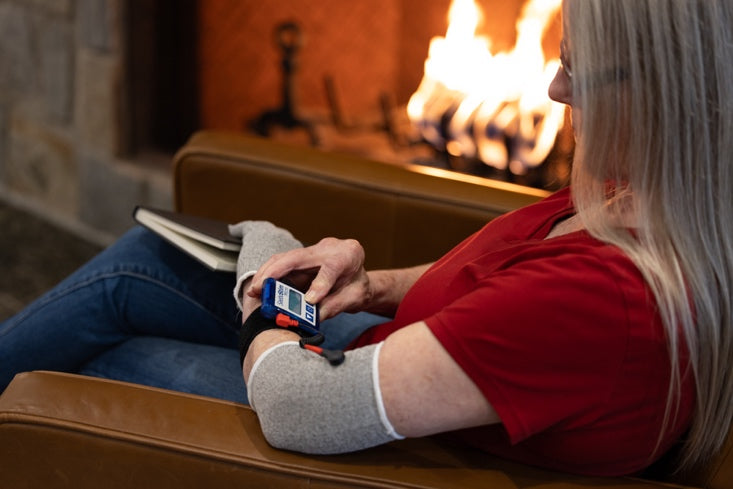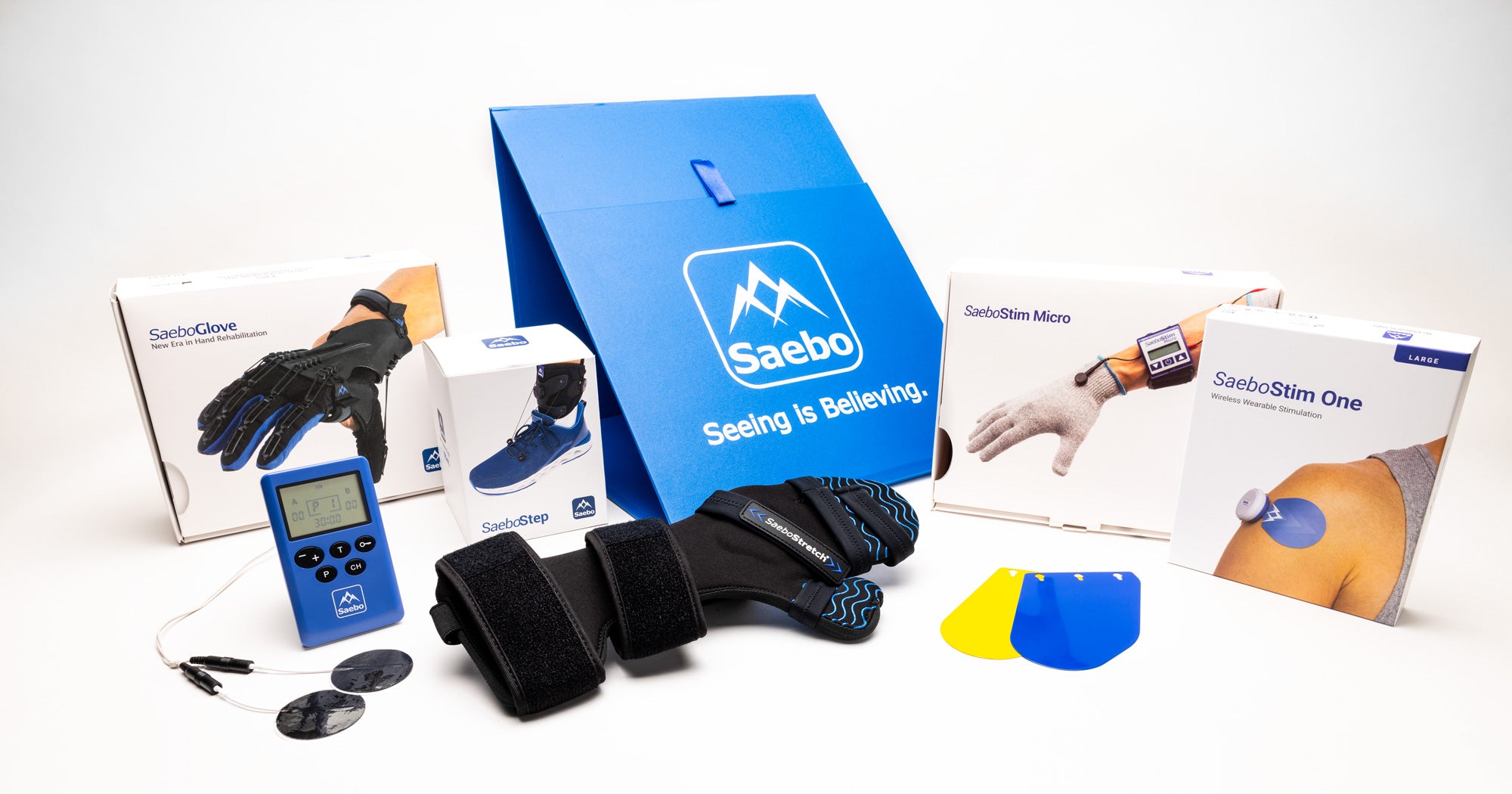Q&A - Why SaeboStim Micro?

Hello fellow clinicians! I’m Henry Hoffman, occupational therapist and co-founder of Saebo. Today, I want to explore a thoughtful question that came in via email from a fellow therapist: I’m struggling to understand why I should use the SaeboStim Micro. My clients would like to extend their fingers, so wouldn’t regular NMES or FES be just as good?
It’s a great question – and one that opens the door to a bigger conversation about how we’re addressing upper limb recovery after stroke.
The Challenge We’re Facing
We know from research that we’re not training the affected arm and hand nearly enough. In fact, studies show that during a typical occupational therapy session, the involved limb is only stimulated 23 to 32 times. Another study reports that we only engage the affected side about 7% of a nine-hour day.
That’s simply not enough. If we want to see meaningful recovery, we must dramatically increase how often we stimulate the arm – both during therapy and at home.
Where the SaeboStim Micro Comes In
The SaeboStim Micro provides low-level sensory stimulation through a comfortable, wearable sleeve. Unlike NMES, which triggers muscle contractions, the SaeboStim Micro is designed to wake up the brain through sensory input. That means it’s not about making the hand move – it's about laying the groundwork for better movement, improved sensation, reduced spasticity, and enhanced cortical plasticity.
It’s not either-or. I recommend using both NMES and the SaeboStim Micro together. NMES strengthens and contracts the muscles, while the Micro builds sensory awareness and supports the nervous system’s ability to reorganize and recover.
How to Incorporate It
A successful home program should aim for 2 to 4 hours of upper limb stimulation each day. That might sound like a lot, but it’s what’s needed to drive real change.
You might structure the day with:
- A session using the SaeboStim Micro for sensory input
- Another session with NMES to activate and strengthen muscles
- Additional time spent doing mirror therapy or functional tasks
- Even passive use of the SaeboStim Micro during rest or sleep
The flexibility of the Micro makes it easy to integrate into a variety of routines. It can be used during therapy, before therapy, or at home – day or night. Pairing it with mirror therapy is especially powerful, as studies show that combining sensory stimulation with visual feedback enhances outcomes even further.
No Plateau in Sight
One of the most important things to remember: It’s never too late. Whether your client is two months post-stroke or 20 years, progress is possible. The key is consistency, variety, and enough intensity to stimulate meaningful change.
At Saebo, we offer a range of accessible, affordable tools to support this mission – and the SaeboStim Micro is a standout among them. We even offer a free trial, so you and your clients can experience the benefits firsthand.
Let’s raise the bar for stroke recovery. With the right tools and the right commitment, there’s no limit to what your patients can achieve.
All content provided on this blog is for informational purposes only and is not intended to be a substitute for professional medical advice, diagnosis, or treatment. Always seek the advice of your physician or other qualified health providers with any questions you may have regarding a medical condition. If you think you may have a medical emergency, call your doctor or 911 immediately. Reliance on any information provided by the Saebo website is solely at your own risk.



